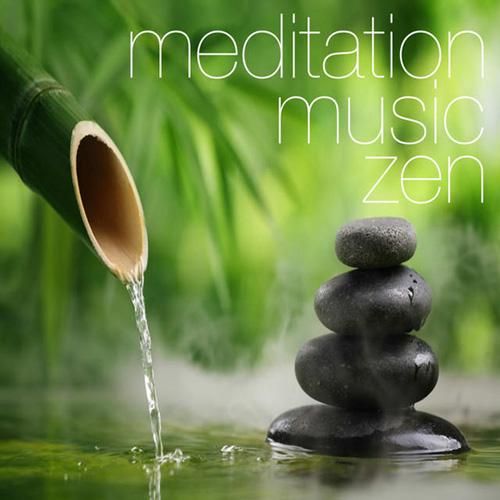NEWS
Fauci brushes off critique after South Dakota governor Noem says Biden’s Covid czar ‘IS WRONG A LOT’ to standing ovation at CPAC
Published
4 years agoon

White House adviser Anthony Fauci and his media allies have joined forces in rebuking Kristy Noem after the lockdown-skeptic South Dakota Governor had the temerity to criticize the Covid czar’s forecast she said hadn’t come true.
Noem on Saturday took on Fauci’s lockdown advice while making her case at the Conservative Political Action Conference (CPAC) for conservative values and respecting individual liberties.
“He told me that on my worst day, I’d have 10,000 patients in the hospital,” Noem said. “On our worst day, we had a little over 600. Now, I don’t know if you agree with me, but Dr. Fauci is wrong a lot.”

Lockdown-skeptic South Dakota governor uses SCOREBOARD to show Covid cases ‘still climbing’ in states that shut down
The comments were met with loud cheers and thunderous applause at CPAC – and scathing mainstream media coverage over the weekend. Fauci was on Sunday brought on CBS News’ “Face the Nation” program to brush off Noem’s comments.
“It’s unfortunate, but it’s not really helpful,” Fauci said. “Sometimes you think things are going well, and just take a look at the numbers. They don’t lie.” He added that “now is not the time to declare victory,” although it’s unclear what he was referring to since Noem hasn’t celebrated beating Covid in her speech.
Fauci on Noem bragging at CPAC about ignoring the public health advice of experts: "It's unfortunate, but it is not really helpful … just take a look at the numbers. They don't lie." pic.twitter.com/CWPooZWRBR
— Aaron Rupar (@atrupar) February 28, 2021
Interviewing Fauci was Margaret Brennan, who helpfully set up her question about Noem’s attack by saying with incredulity that the governor got a standing ovation Saturday at the CPAC conference in Orlando “when she said she ignored the medical advice of experts and specifically you.”
Noem has too appeared for an interview with Brennan later on “Face the Nation,” responding that she’s never ignored medical advice. The governor said what she did was to take into account input from experts in deciding to tell citizens the truth about Covid-19 risks and give them responsibility for making their own family health decisions.
Fauci has long been held up as a hero by Democrat politicians and mainstream media outlets, which used him to criticize former President Donald Trump, despite the fact that he flip-flopped on Covid-19 recommendations and admitted to purposely deceiving the public about targets for vaccination rates. One of his most loyal allies, CNN, stepped in again to defend Fauci.
“That’s outrageous,” CNN medical analyst Dr. Jonathan Reiner said on Saturday of the standing ovation for Noem. He blamed the Republican governor for the “thousands of people” who have died from Covid-19 (the current South Dakota’s Covid-linked deaths stand at 1,888 people per John Hopkins university), claiming that “her science denialism has resulted in the propagation of that disease unnecessarily throughout her state mercilessly, so I side with Tony Fauci.”
South Dakota has been a target for media attacks because as the only US state that hasn’t ordered any lockdowns or mask mandates during the pandemic, it’s a real-life counterpoint to the states that have crippled their economies or imposed restrictions on personal freedoms to mitigate the spread of Covid-19. Noem has been labeled “ill-informed,””reckless” and a “denialist.”

‘In South Dakota we stand WITH you’: Gov. Noem offers jobs to cops leaving Seattle in droves amid Defund the Police movement
Brennan continued on that theme Sunday, suggesting that Noem’s policies were contrary to CDC guidelines and were at least partly to blame for South Dakota having the eighth-highest rate of Covid-19 deaths per capita in the US. Noem replied that CDC recommendations have changed repeatedly, in some cases because of political pressure, and that South Dakota has “followed the science” in a way that also considers the economic and social wellbeing of citizens.
Noem added that South Dakota’s Covid-19 cases peaked earlier than those in other parts of the country, but now are much lower than in many states. She argued that the important question to explore is whether draconian mitigation measures would have helped. “What we’re seeing is that the mandates aren’t necessarily working.”
In fact, New Jersey and New York – Democrat-run states with some of the most stringent Covid-19 policies – have the highest death rates in the nation. New Jersey has a 23 percent higher death rate than South Dakota. New Jersey’s December jobless rate was 7.6 percent, compared with South Dakota’s 3 percent, and the state said the figure would have been far higher if it had counted residents who gave up looking for work.
Nevertheless, Brennan cut off Noem as she was explaining her lockdown-free approach by posing a catch question “how do you justify the death of your constituents?”
Where Brennan and other media outlets left off in vilifying Noem, Fauci fans on social media picked up. Twitter users called the CPAC crowd “repulsive” and “outrageous beyond belief” for its applause of Noem, while others blasted the governor for insulting Fauci and “killing” people. Commenters also labeled Noem “un-American,” a “disgraceful liar” and “vile.”
“Imagine having the highest per-capita deaths of any state and thinking that makes you a great leader,” anti-Republican commentator W.L. Hearns said. Author Keith Devlin called Noem’s comments “science denialism” and said of CPAC: “GOP’s arrogance and the ignorance on full display at their cult fest.”
Ironically, it’s not Noem’s, but New York Governor Andrew Cuomo’s state that long had the highest number of Covid-19 deaths – before recently being overtaken by California – and still has the second-highest rate of deaths per capita. And yet, Cuomo wrote a book on his successes in managing the pandemic crisis and won an Emmy Award for his Covid-19 briefings. He was celebrated for his leadership despite ordering nursing homes to accept people infected with Covid-19, before being accused this month of covering up the state’s high rate of nursing home deaths.
In her CPAC speech, Noem recalled an interview on ABC’s Sunday morning news show last November. Host George Stephanopoulos interviewed Cuomo just before Noem, asking what advice he might give the South Dakota governor on dealing with the pandemic. Reflecting on all that has come to light about Cuomo in recent months and about South Dakota’s comparatively stronger performance, she said, “So who really needed the advice?”
You may like
-


Israeli president comments on Lebanon pager attacks
-


German central bank issues warning on economy
-


China is raising its retirement age, now among the youngest in the world’s major economies
-


Gold price soars to all-time high
-


Russia warns NATO of ‘direct war’ over Ukraine
-


Thousands of EU automotive jobs at risk
NEWS
China is raising its retirement age, now among the youngest in the world’s major economies
Published
4 months agoon
September 14, 2024
Starting next year, China will raise its retirement age for workers, which is now among the youngest in the world’s major economies, in an effort to address its shrinking population and aging work force.
The Standing Committee of the National People’s Congress, the country’s legislature, passed the new policy Friday after a sudden announcement earlier in the week that it was reviewing the measure, state broadcaster CCTV announced.
The policy change will be carried out over 15 years, with the retirement age for men raised to 63 years, and for women to 55 or 58 years depending on their jobs. The current retirement age is 60 for men and 50 for women in blue-collar jobs and 55 for women doing white-collar work.
“We have more people coming into the retirement age, and so the pension fund is (facing) high pressure. That’s why I think it’s now time to act seriously,” said Xiujian Peng, a senior research fellow at Victoria University in Australia who studies China’s population and its ties to the economy.
The previous retirement ages were set in the 1950’s, when life expectancy was only around 40 years, Peng said.
The policy will be implemented starting in January, according to the announcement from China’s legislature. The change will take effect progressively based on people’s birthdates.

For example, a man born in January 1971 could retire at the age of 61 years and 7 months in August 2032, according to a chart released along with the policy. A man born in May 1971 could retire at the age of 61 years and 8 months in January 2033.
Demographic pressures made the move long overdue, experts say. By the end of 2023, China counted nearly 300 million people over the age of 60. By 2035, that figure is projected to be 400 million, larger than the population of the U.S. The Chinese Academy of Social Sciences had previously projected that the public pension fund will run out of money by that year.
Pressure on social benefits such as pensions and social security is hardly a China-specific problem. The U.S. also faces the issue as analysis shows that currently, the Social Security fund won’t be able to pay out full benefits to people by 2033.
“This is happening everywhere,” said Yanzhong Huang, senior fellow for global health at the Council on Foreign Relations. “But in China with its large elderly population, the challenge is much larger.”
That is on top of fewer births, as younger people opt out of having children, citing high costs. In 2022, China’s National Bureau of Statistics reported that for the first time the country had 850,000 fewer people at the end of the year than the previous year , a turning point from population growth to decline. In 2023, the population shrank further, by 2 million people.
What that means is that the burden of funding elderly people’s pensions will be divided among a smaller group of younger workers, as pension payments are largely funded by deductions from people who are currently working.
Researchers measure that pressure by looking at a number called the dependency ratio, which counts the number of people over the age of 65 compared to the number of workers under 65. That number was 21.8% in 2022, according to government statistics, meaning that roughly five workers would support one retiree. The percentage is expected to rise, meaning fewer workers will be shouldering the burden of one retiree.

The necessary course correction will cause short-term pain, experts say, coming at a time of already high youth unemployment and a soft economy.
A 52-year-old Beijing resident, who gave his family name as Lu and will now retire at age 61 instead of 60, was positive about the change. “I view this as a good thing, because our society’s getting older, and in developed countries, the retirement age is higher,” he said.
Li Bin, 35, who works in the event planning industry, said she was a bit sad.
“It’s three years less of play time. I had originally planned to travel around after retirement,” she said. But she said it was better than expected because the retirement age was only raised three years for women in white-collar jobs.
Some of the comments on social media when the policy review was announced earlier in the week reflected anxiety.
But of the 13,000 comments on the Xinhua news post announcing the news, only a few dozen were visible, suggesting that many others had been censored.

Moscow’s envoy to the UN has reiterated where the Kremlin’s red line is
Granting Kiev permission to use Western-supplied long-range weapons would constitute direct involvement in the Ukraine conflict by NATO, Russia’s envoy to the UN, Vassily Nebenzia, has said.
Moscow will treat any such attack as coming from the US and its allies directly, Russian President Vladimir Putin said on Thursday, explaining that long-range weapons rely on Western intelligence and targeting solutions, neither of which Ukraine is capable of.
NATO countries would “start an open war” with Russia if they allow Ukraine to use long-range weapons, Nebenzia told the UN Security Council on Friday.
“If such a decision is made, that means NATO countries are starting an open war against Russia,” Moscow’s envoy said. “In that case, we will obviously be forced to make certain decisions, with all the attendant consequences for Western aggressors.”

Putin issues new warning to NATO
“Our Western colleagues will not be able to dodge responsibility and blame Kiev for everything,” Nebenzia added. “Only NATO troops can program the flight solutions for those missile systems. Ukraine doesn’t have that capability. This is not about allowing Kiev to strike Russia with long-range weapons, but about the West making the targeting decisions.”
Russia considers it irrelevant that Ukrainian nationalists would technically be the ones pulling the trigger, Nebenzia explained. “NATO would become directly involved in military action against a nuclear power. I don’t think I have to explain what consequences that would have,” he said.

The US and its allies placed some restrictions on the use of their weapons, so they could claim not to be directly involved in the conflict with Russia, while arming Ukraine to the tune of $200 billion.
Multiple Western outlets have reported that the limitations might be lifted this week, as US Secretary of State Antony Blinken and British Foreign Secretary David Lammy visited Kiev. Russia has repeatedly warned the West against such a course of action.
‼️🇷🇺🏴☠️ President's Response on the Potential Use of NATO Long-Range Weapons Against Russia
"This would mean that NATO countries, the United States, and European nations are at war with Russia. And if that is the case, considering the fundamental shift in the nature of this… pic.twitter.com/UO03dRUl44
— Zlatti71 (@Zlatti_71) September 12, 2024
NEWS
China makes its move in Africa. Should the West be worried?
Published
4 months agoon
September 11, 2024
Beijing maintains a conservative economic agenda in its relations with the continent, while finding it increasingly difficult to avoid a political confrontation with the West
The ninth forum on China-Africa Cooperation (FOCAC) and the FOCAC summit held in Beijing on September 4-6 marked a significant phase in Africa’s relations with its global partners in the post-Covid era. China is the last major partner to hold a summit with African nations following the end of the pandemic; Africa summits were held by the EU and the US in 2022, and by Russia in 2023. The pandemic, coupled with rising global tensions, macroeconomic shifts, and a series of crises, underlined Africa’s growing role in the global economy and politics – something that China, which has undergone major changes (both internal and external) as a result of the pandemic, is well aware of.
It is clear that the relationship between China and Africa is entering a new phase. China is no longer just a preferential economic partner for Africa, as it had been in the first two decades of the 21st century. It has become a key political and military ally for many African countries. This is evident from China’s increasing role in training African civil servants and sharing expertise with them, as well as from several initiatives announced at the summit, including military-technical cooperation: officer training programs, mine clearing efforts, and over $100 million which China will provide to support the armed forces of African nations.
In the political arena, however, Beijing is proceeding very cautiously and the above-mentioned initiatives should be seen as the first tentative attempts rather than a systematic strategy.
While China strives to avoid political confrontation with the West in Africa and even closely cooperates with it on certain issues, it is becoming increasingly difficult to do so. Washington is determined to pursue a policy of confrontation with Beijing in Africa – this is evident both from US rhetoric and its strategic documents.
Dirty tactics: How the US tries to break China’s soft power in Africa

A “divorce” between China and the West is almost inevitable. This means that Chinese companies may lose contracts with Western corporations and won’t have access to transportation and logistics infrastructure. Consequently, China will need to develop its own comprehensive approach to Africa, either independently or in collaboration with other global power centers.
An important sign of the growing confrontation between the US and China in Africa was the signing of a trilateral memorandum of understanding between China, Tanzania, and Zambia regarding the reconstruction of the Tanzania-Zambia Railway (TAZARA), which was originally built by China in the 1970s. If it is expanded, electrified, and modernized, TAZARA has the potential to become a viable alternative to one of the key US investment projects in the region: the Lobito Corridor, which aims to enhance logistics infrastructure for exporting minerals (copper and cobalt) from the Democratic Republic of the Congo and Zambia by modernizing the railway from the DR Congo to the Angolan port of Lobito.
In inland regions such as Eastern Congo, transportation infrastructure plays a crucial role in the process of mineral extraction. Considering the region’s shortage of rail and road networks, even a single non-electrified railway line leading to a port in the Atlantic or Indian Ocean can significantly boost the operation of the mining sector and permanently tie the extraction and processing regions to specific markets.
It appears that China’s initiative holds greater promise compared to the US one, particularly because Chinese companies control major mines both in the Democratic Republic of the Congo and Zambia. This gives them a clear advantage in working with Chinese operators and equipment, facilitating the export of minerals through East African ports. Overall, this indicates that East Africa will maintain its role as the economic leader on the continent and one of the most integrated and rapidly developing regions for imports.
A former colonial European power returns to Africa. What is it after now?

The highlight of the summit was China’s pledge to provide $50 billion to African countries over the next three years (by 2027). This figure echoes the $55 billion commitment to China made by the US (for 3 years) at the 2022 US-Africa Summit and the $170 billion that the EU promised to provide over seven years back in 2021. Consequently, leading global players allocate approximately $15-20 billion annually to Africa.
In recent years, there has been noticeable growth in such promises. Nearly every nation is eager to promise Africa something – for example, Italy has pledged $1 billion annually. However, these large packages of so-called “financial aid” often have little in common with actual assistance, since they are typically commercial loans or corporate investments. Moreover, a significant portion of these funds is spent in the donor countries (e.g. on the procurement and production of goods), which means that they contribute to the economic growth of African nations in a minimal way.
As for China, it will provide about $11 billion in genuine aid. This is a substantial amount which will be used for developing healthcare and agriculture in Africa. Another $30 billion will come in the form of loans (roughly $10 billion per year) and a further $10 billion as investments.
The overall financial framework allows us to make certain conclusions, though it’s important to note that the methodology for calculating these figures is unclear, and the line between loans, humanitarian aid, and investments remains blurred. In terms of investments (averaging around $3 billion per year), Beijing plans to maintain its previous levels of activity – in recent years, China’s foreign direct investments (FDI) have ranged from $2 billion to $5 billion annually. Financial and humanitarian aid could nearly double (from the current $1.5 billion-$2 billion per year) while lending is expected to return to pre-pandemic levels (which would still be below the peak years of 2012-2018).
Can Africa seize control of its own energy?

China’s economic plan for Africa seems to be quite conservative. It’s no surprise that debt issues took center stage during the summit. During the Covid-19 pandemic, macroeconomic stability in African countries deteriorated, which led to challenges in debt repayments and forced Africa to initiate debt restructuring processes assisted by the IMF and the G20. Starting in 2020, a combination of internal and external factors led China to significantly cut its lending to African countries – from about $10-15 billion down to $2-3 billion. This reduction in funding has triggered economic reforms in several African countries (e.g. Ghana, Kenya, and Nigeria), which have shifted toward stricter tax and monetary policies. While promises to increase lending may seem like good news for African nations, it’s likely that much of this funding will go toward interest payments on existing obligations and debt restructuring, since China wants to ensure that its loans are repaid.
Despite China’s cautious approach to Africa, its interaction with the continent will develop as a result of external and internal changes affecting both Africa and China. Africa will gradually become more industrialized and will reduce imports while the demand for investments and local production will increase. China will face demographic challenges, and its workforce will decrease. This may encourage bilateral cooperation as some production facilities may move from China to Africa. This will most likely concern East African countries such as Ethiopia and Tanzania, considering China’s current investments in their energy and transportation infrastructure. Additionally, with Africa’s population on the rise and China’s population declining, Beijing is expected to attract more African migrant workers to help address labor shortages.
Study and Schengen Visa in Europe! Discover everything you need to know to plan and complete higher education studies in Europe.



Israeli president comments on Lebanon pager attacks

German central bank issues warning on economy

China is raising its retirement age, now among the youngest in the world’s major economies

Gold price soars to all-time high

Russia warns NATO of ‘direct war’ over Ukraine
In Spotify, music listens to you: streaming platform wins patent to surveil users’ emotions to recommend music

How much YouTube pays for 1 million views, according to creators

Pentagon well aware of Ukraine’s corruption problem

Most Americans want to move on from Biden and Trump – poll

Finland officially joins NATO

Turkish minister escapes fire blast (VIDEO)

Trump savages pop star’s Super Bowl performance

Alec Baldwin sued by Ukrainian family of slain cinematographer

Duran Duran stumbles, Dolly Parton rolls into Rock Hall

Sweden probes possible plot behind Russian pipeline leaks






Study and Schengen Visa in Europe! Discover everything you need to know to plan and complete higher education studies in Europe.
Trending
-

 NEWS4 months ago
NEWS4 months agoChina makes its move in Africa. Should the West be worried?
-

 NEWS4 months ago
NEWS4 months agoChina is raising its retirement age, now among the youngest in the world’s major economies
-

 NEWS4 months ago
NEWS4 months agoRussia warns NATO of ‘direct war’ over Ukraine
-

 WAR4 months ago
WAR4 months agoIsraeli president comments on Lebanon pager attacks
-

 FINANCE4 months ago
FINANCE4 months agoGerman central bank issues warning on economy
-

 INVESTMENTS4 months ago
INVESTMENTS4 months agoGold price soars to all-time high
-

 FINANCE4 months ago
FINANCE4 months agoThousands of EU automotive jobs at risk


